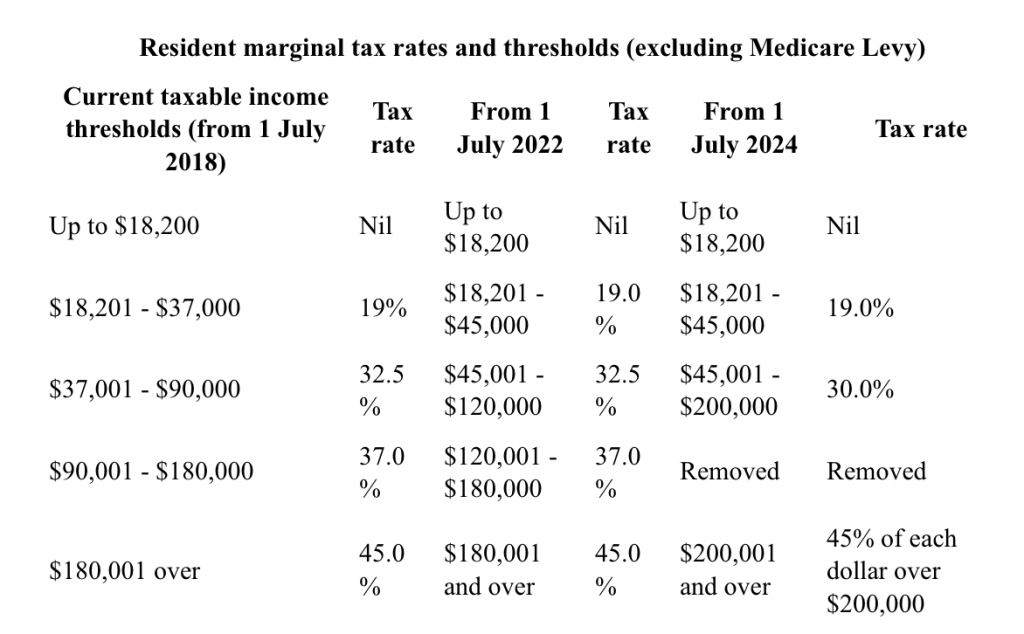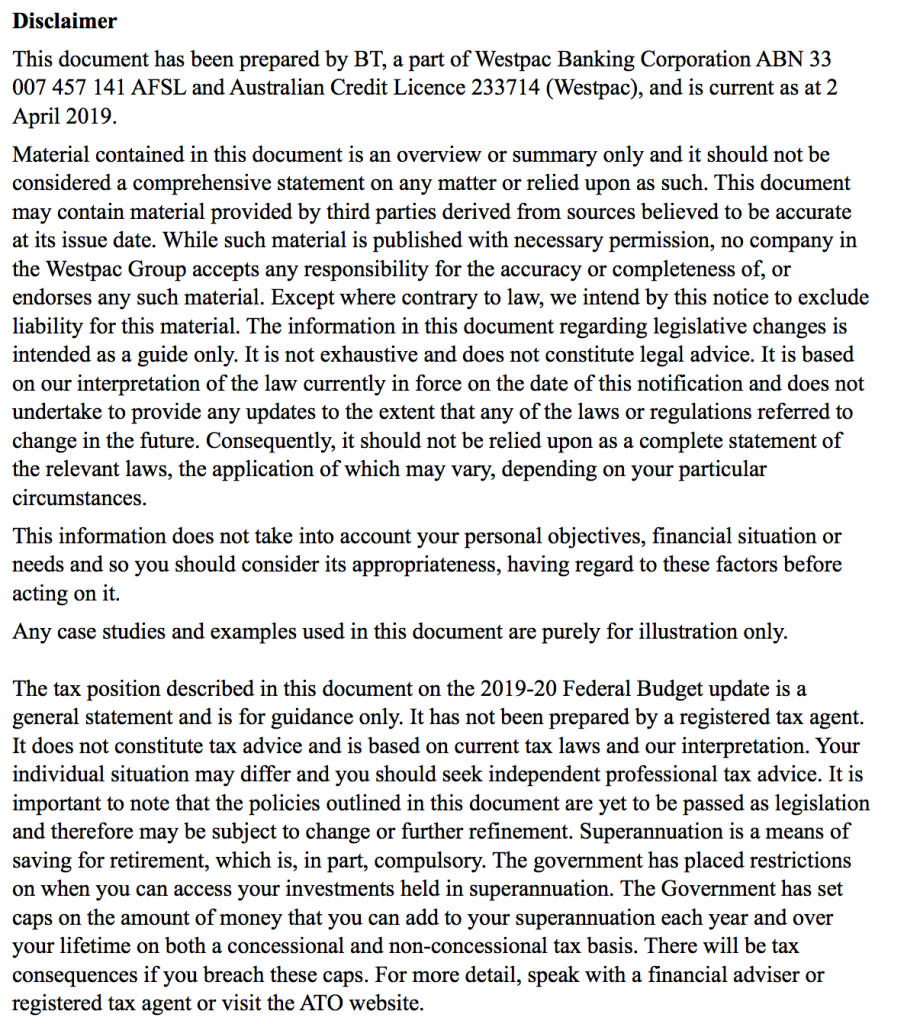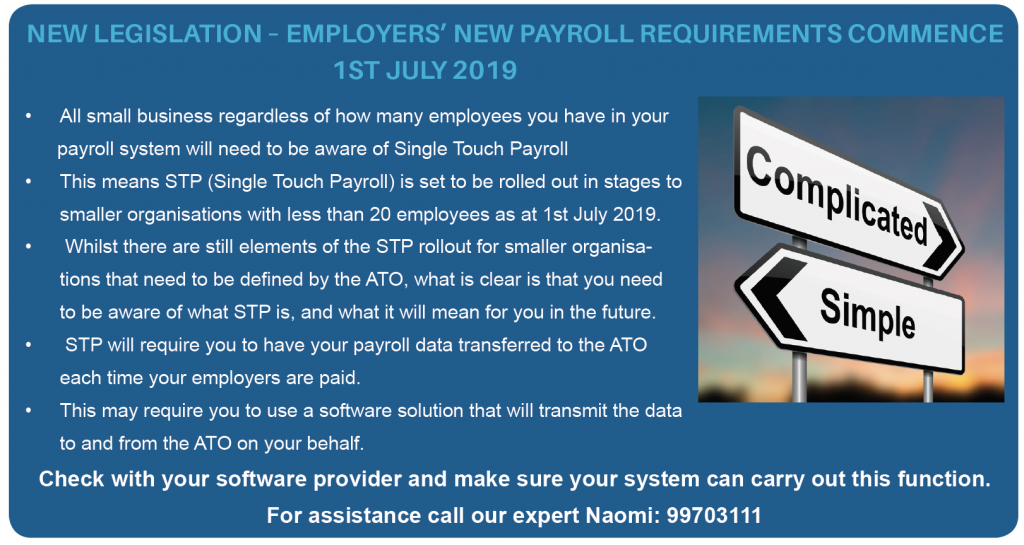CONNECT AUTUMN- 2019
Financial news for tomorrow’s lifestyle
EDITORIAL
It is hard to believe we are into the second quarter of 2019. Where did the first quarter of the year go, it seems like only yesterday we were celebrating Christmas and New Year. So, what does 2019 have in store for us? We have had a Royal Commission into Banking and Financial services. This hopefully will bring a positive change to banks and financial services. The banks have reacted with a tightening of credit, which has resulted in businesses finding it difficult to get credit and harder to get loans for housing.
The most recent NAB SME Business Survey (2018 Q3) reported that SME business confidence had fallen to below average. The biggest issue being sales and demand as well as getting suitable labour.
I continually find as a Business Coach, that businesses and trades find it hard to employ suitable staff who want to work.
Some of the main challenges in business that have been expressed are, red tape slowing things down and over regulation in just about every industry. Additional problems for businesses are cash flow, debtors and access to finance.
The institute of Public Affairs supports this view in a recent report, stating how red tape is undermining opportunity. It reports, SME’s (small and medium enterprises) are being strangled by it. Our current government has endeavoured to reduce red tape and give small business tax incentives, reducing tax rates for small business.
It is critical that our government continue to support SME’s as there are 3.3 million Australian Small Businesses contributing $395 Billion annually to the Australian economy. We need to support Australian Small Business and endeavour to buy Australian where ever possible. This is our future.
Continually I find that the biggest issue for business owners is knowing where to look for information and where to get help. Business Coaching has become our passion as we can see the need that is out there in the SME community. Usually business owners meet with their accountant once or twice a year, by that time any pressing issue is ancient history. Business owners will tell you they need more than just what they get from their accountants once or twice a year. Business Coaching has opened my eyes to the real needs that business owners are facing. We are passionate about helping business to see their way through the fog, assisting them with the day to day issues that tend to hold back many businesses from moving forward.
John Osborne
Chairman
 BUDGET SUMMARY
BUDGET SUMMARY
Federal Budget 2019-20
Overview
On 2 April 2019, the Government handed down the 2019-20 Federal Budget.
The focus of the 2019-20 Budget is a plan for a stronger economy and securing a better future. In last year’s Budget, the Government commented that just as most households had to tighten their budgets over recent years, the Government was committed to doing the same. With the Budget returning to a surplus position much sooner than anticipated, the Government is now seeking to give back to Australians.
From a pure financial planning and wealth perspective, the positive news from this year’s Budget is that the changes are minimal in number compared to prior years, and largely positive in nature. This is not a surprise in an election year. From accelerating the timing of changes to personal taxation thresholds and tax offsets originally announced in the 2018-19 Budget, measures to allow people to contribute to super for a longer period of time, and additional assistance to welfare recipients to overcome increasing living costs, particularly for essential utilities such as electricity, there is something for nearly everyone in this Budget.
It is always important to remember that at this point, the Budget measures are only statements of proposed changes, and are not yet law. With an election expected to occur in May 2019, it’s likely that these proposals will only become law if the current Government is successfully re-elected.
Following is a summary of some of the major proposals and how they may affect you.
Taxation
The major aspect of taxation reform centres on the Government’s ‘Personal Income Tax Plan’. The Personal Income Tax Plan was announced in the 2018-19 Federal Budget, and is being phased in over a seven year period.
The first set of changes implemented under the Personal Income Tax Plan, which took effect from 1 July 2018 (until 30 June 2022), was the introduction of a ‘Low and Middle Income Tax Offset’, valued at up to $530 per annum. In this year’s Budget, the Government has announced they will more than double the maximum benefit to $1,080 per annum. This is still proposed to have a commencement date of 1 July 2018, which means if legislated, the benefit will flow through to eligible individuals when they lodge their tax return for the current financial year.
The maximum benefit will flow to those with taxable income ranging from $48,000 to $90,000, but there is some benefit if your taxable income is below $48,000 or between $90,000 and $126,000.
It had been expected that the Government would further accelerate other elements of the Personal Income Tax Plan, but they have chosen not to do this. However, they are providing additional relief by making further changes to thresholds and rates. These changes are reflected in the table on the following chart.

Small business owners will also gain the benefit of a further 12 month extension (until 30 June 2020) of the ability to claim an instant asset write off for eligible assets purchased, and an increase in the write off up to $30,000 (increased from the current level of $20,000) from 3 April 2019.
Superannuation
Superannuation was left largely untouched except for a number of adjustments to existing policies, including giving individuals greater flexibility to contribute to super.
From 1 July 2020, if you are aged 65 or 66, you will be able to make additional contributions to super even if you’re no longer working. This is a welcome change for many Australians looking to boost their income in retirement. It is also intended to provide an alignment to the qualification age for the age pension, which is progressively rising to age 67 (from 1 July 2023).
In addition, from 1 July 2020 there will be an increased ability to make spouse contributions to super. Currently, this is only an option provided your spouse hasn’t turned 70. The existing age limit will be increased to allow you to make contributions on behalf of your spouse, up to age 74.
Welfare
The Government has committed to increased funding to make more aged care spaces available for Australians in the future – an important commitment for those in need. Of more current impact however is an immediate one-off payment of $75 for individuals and $125 per couple for eligible welfare recipients to assist with their next power bill.
Concluding thoughts
Overall, the number of changes announced in this year’s Federal Budget relating to financial planning and wealth are small compared to prior years. The big ticket items from the Budget are the Government’s commitments to increased expenditure on infrastructure and essential services.
However, with many Australians feeling pressure from increased costs of living and the inevitable impact on tightened household budgets, the proposed acceleration of personal tax cuts is a positive, and many will look to benefit from income tax changes. It’s important to remember though that any possible benefit gained is only half the story. The real question is what you do with those savings.
The most important consideration you might have right now is to ensure that you don’t over-react to measures as they are still only proposals, and are subject to the Government’s re-election and then the successful passage of legislation. The best thing you can do is to seek advice that is personal to your own circumstances. The first step to take is to speak with a professional adviser.

Cameron Stuart
CEO


IS IT TIME TO FIX YOUR MORTGAGE?
Reserve banks globally are starting to reign in expectations of further rate hikes, with most suggesting the chance of a hike or an easing is evenly poised.
In line with flatter yield curves, fixed rate home loans have reduced in the past 2 quarters. Most of these reductions have been centric around owner-occupied loans.
Possibly in response to the “shadow” banking industry that is now taking market share.
Current market pricing suggests the RBA cash rate will be at 1.25% in August 2019 and 1.00% by April 2020.
Between now and April there will be more data, more international influences, elections and other factors that will determine where rates will be.
Nobody really knows if rates will be higher or lower come April 2020. Not even the RBA.
We do know this, some of the lenders are offering 2-year fixed rates at 3.58% and 3-year fixed rates at 3.69%.
It may be worthwhile looking at fixing a portion of your mortgage.
For a free consultation to find out if this is a good strategy for you, please contact our Finance team on 9970 3111.
NEW LEGISLATION – EMPLOYERS’ NEW PAYROLL REQUIREMENTS COMMENCE
1ST JULY 2019
All small business regardless of how many employees you have in your
payroll system will need to be aware of Single Touch Payroll
This means STP (Single Touch Payroll) is set to be rolled out in stages to smaller organisations with less than 20 employees as at 1st July 2019.
Whilst there are still elements of the STP rollout for smaller organisations that need to be defined by the ATO, what is clear is that you need to be aware of what STP is, and what it will mean for you in the future.
STP will require you to have your payroll data transferred to the ATO each time your employers are paid.
This may require you to use a software solution that will transmit the data to and from the ATO on your behalf.
Check with your software provider and make sure your system can carry out this function.
For assistance call our expert Naomi: 99703111


